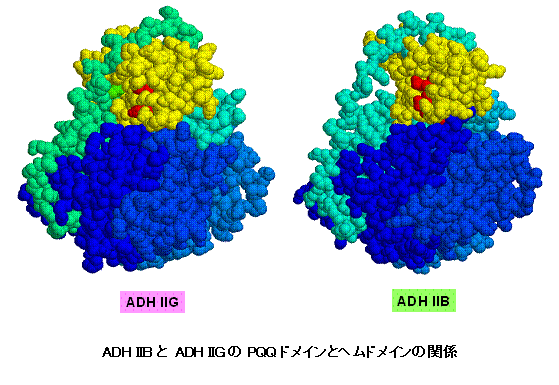Structural / functional analysis of quinoprotein

From the late 1990s, we also began to analyze the intramolecular and intermolecular electron transfer reactions of these soluble and membrane-bound quinoproteins and quinohemoproteins.In addition to type III ADH and mGDH, which are active in the cell membrane of acetic acid bacteria, the search for quinoproteins that function in the cell membrane of acetic acid bacteria has been promoted, and in addition to glycerol and sorbitol, arabitol and gluconic acid (the product is 5-ketogluconic acid). The existence of glycerol dehydrogenase (GLDH), which is also reactive, and quinic acid dehydrogenase (QDH), which can be used for the production of shikimic acid, has been clarified.At the same time, at this time, structural analysis of these quinoproteins and quinohemoproteins began in collaboration with Dr. Scott Mathieu (Washington Univ., USA) and Dr. Ken Hirotsu (Osaka City University).These results finally began to appear in the 2000s, and the structure of type II ADH ADH IIB (2002) and then ADH IIG (2005) was unraveled. In addition, type III ADH, which is a membrane enzyme of acetobacter, is now one step closer.
These studies are quite basic, but are used in the development of biosensors, such as sGDH and type II ADH, and membrane-bound quinoproteins of acetic acid bacteria (GLDG, QDH). Some of them are used for the application of useful substance production (5-ketogluconic acid and shikimic acid) in oxidative fermentation using them.